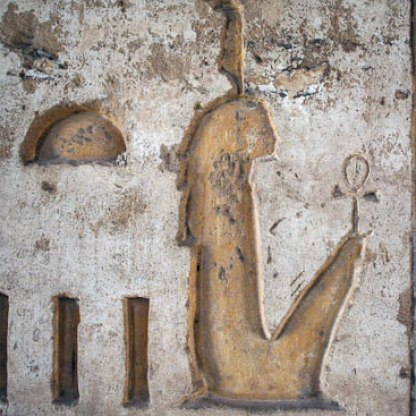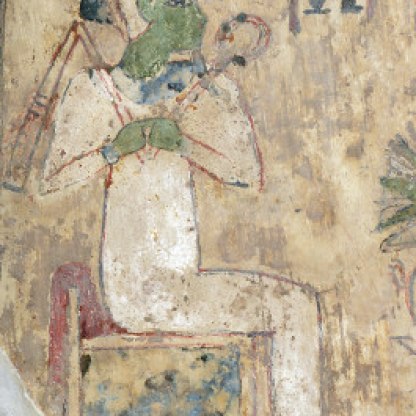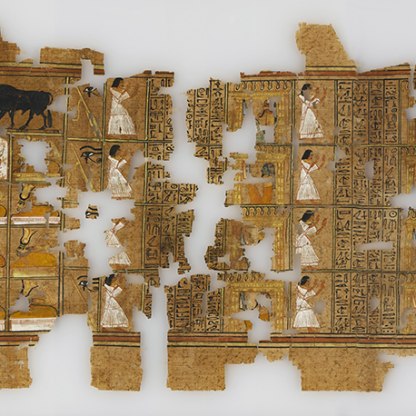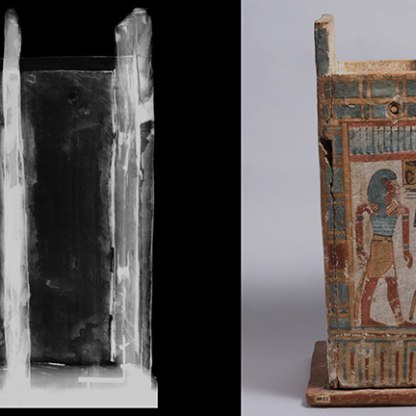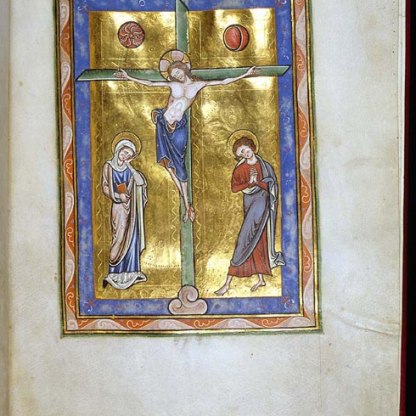Book of the Dead

'I did no evil in that land in the Hall of the two truths, because I know the names of the gods who exist there... I have not turned back the god in his procession. I am pure... My purity is the purification of the phoenix...'
The figure on the right of this papyrus, who speaks these words, is identified as Inpehufnakht ‘captain of the boats of the temple of Amun-Re, King of the gods'. He raises his hands towards a shrine with an open door, just visible at the left of the photograph. A ribbon and a perfume cone decorate his head.
Inpehufnakht is dead. But the words that surround him, and those contained within the shrine, come from a series of spells designed to help the soul of the deceased through the underworld to the the Field of Reeds, a paradise-like environment. Collectively these incantations are known as the Book of the Dead or, more accurately, 'Spells for Coming Forth by Day'. The papyrus containing these would have been placed in or near the coffin of Inpehufnakht, along with other objects intended to ease his soul’s passage and help him in the life beyond.
The words quoted above come from the introduction to Chapter 125 of the Book of the Dead, the Negative Confession. This text is often accompanied by an illustration showing the judgment of the deceased: the heart is weighed in a balance against the feather of Maat – the principle of divine order in ancient Egypt, without which nothing functioned properly. This process is overseen by Osiris, the god of the underworld, and the 42 assessors – deities who represent various aspects of Maat.
In the next part of the spell, the deceased addresses each of the assessors in turn, denying any wrongdoing in his life:
'O, Far-strider, who came forth from Heliopolis, I have done no falsehood. O, Fire-Embracer, who came forth from Kheraha, I have not robbed. O, Dangerous One, who came forth from Rosetjau, I have not killed men...'
It was a stern test and there was much at stake. The soul that was judged righteous, as Inpehufnakht here proclaims himself to be, gained admission to the Field of Reeds. The corrupt soul, however, faced utter annihilation. In representations of the heart-weighing, the demon Ammut is often shown lurking hungrily by the weighing scales. This creature – a cross between a lion, a crocodile and a hippopotamus – devoured the souls of the wicked.
The photograph in the margin shows only the right-hand extreme of a 175-cm-long papyrus, at the end of which Inpehufnakht appears again. Between these two representations are other small illustrations, called vignettes, and further hymns and spells including 'The Book of Becoming a Swallow', 'The Chapter on Entering the Region of Sand' and the short 'Hymn to Re at his setting'.
Themes and periods
Data from our collections database
Book of the Coming Forth By Day, of Inpehufnakht, chief of the sailors of the barque in the temple of Amun Re, king of the gods, son of Ashakhet (who held the same position); with vignettes
Acquisition and important dates
- Method of acquisition: Bequeathed
- Dates: 1904
Dating
Place(s) associated
- Egypt
Stories, Contexts and Themes
Other highlight objects you might like
Suggested Curating Cambridge products
Sign up to our emails
Be the first to hear about our news, exhibitions, events and more…
